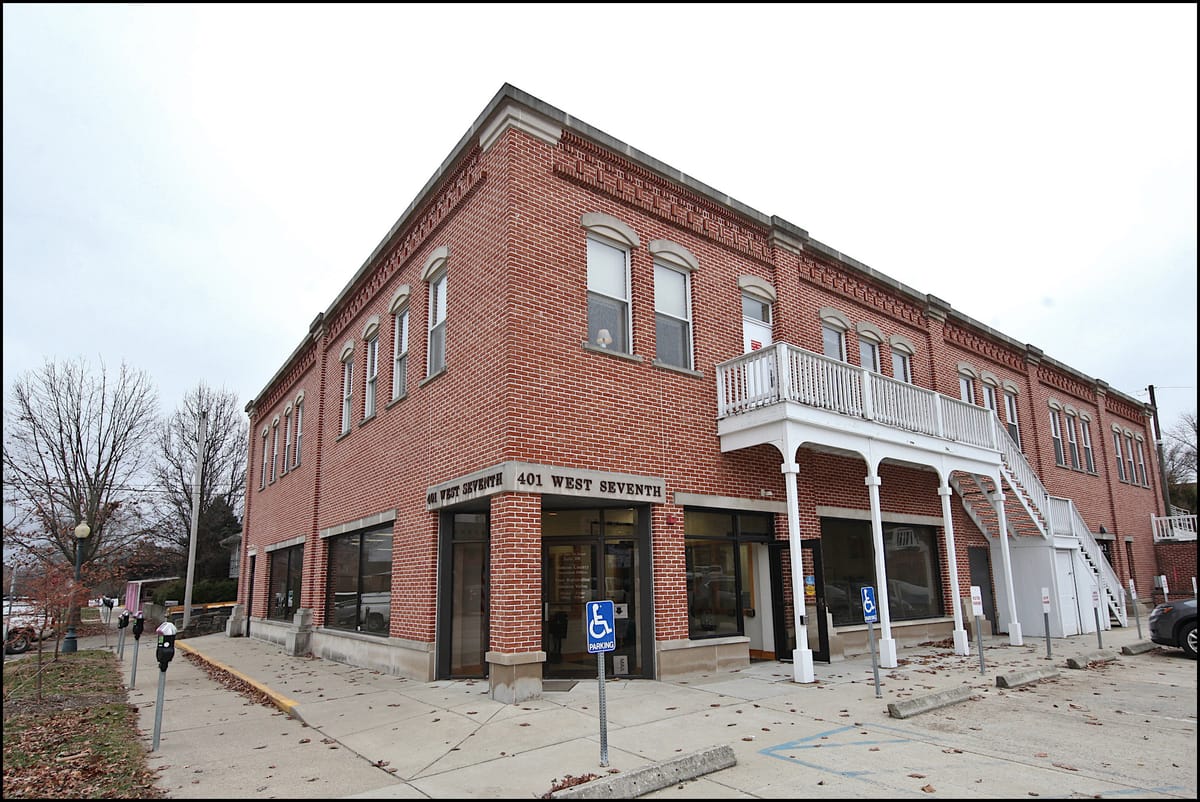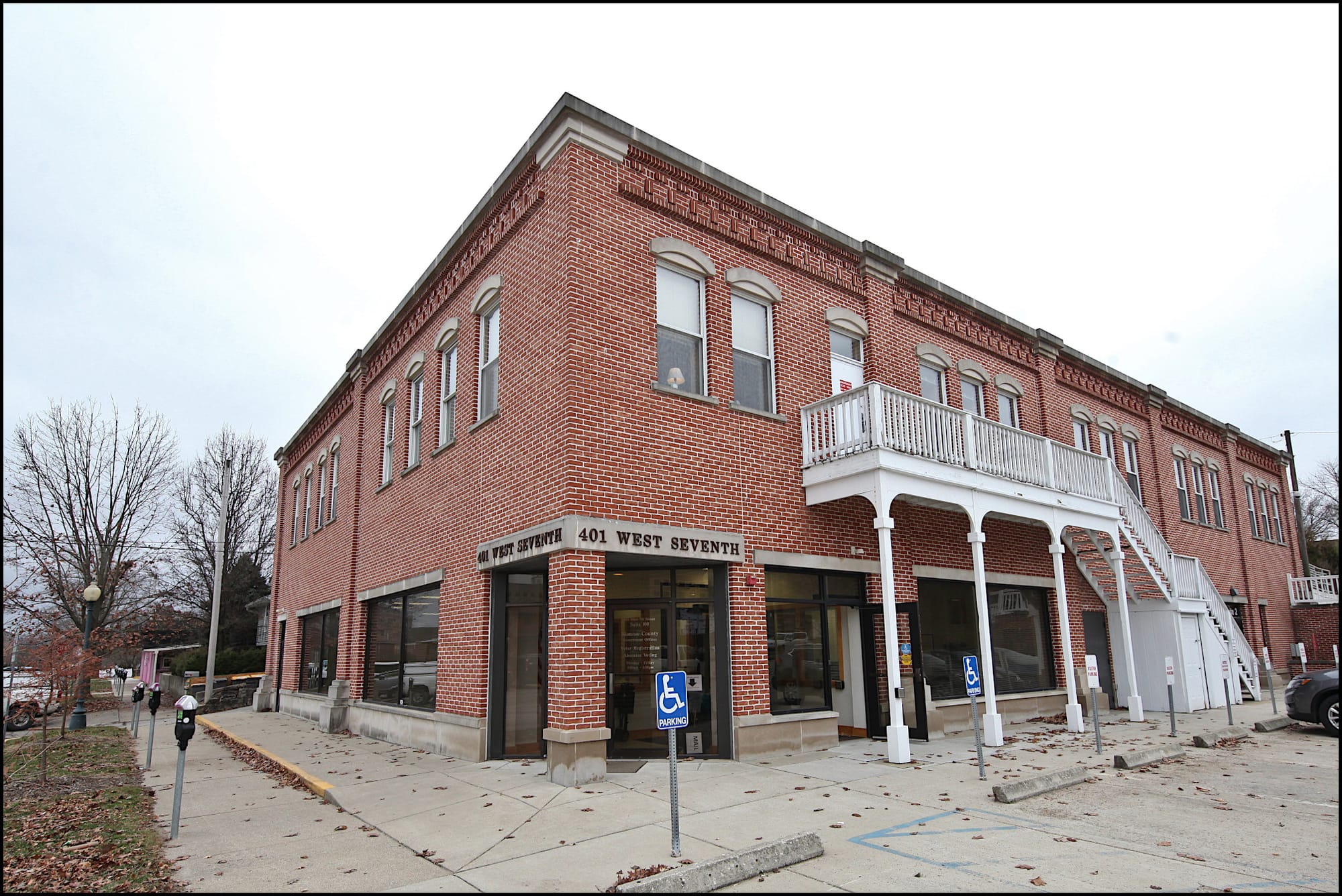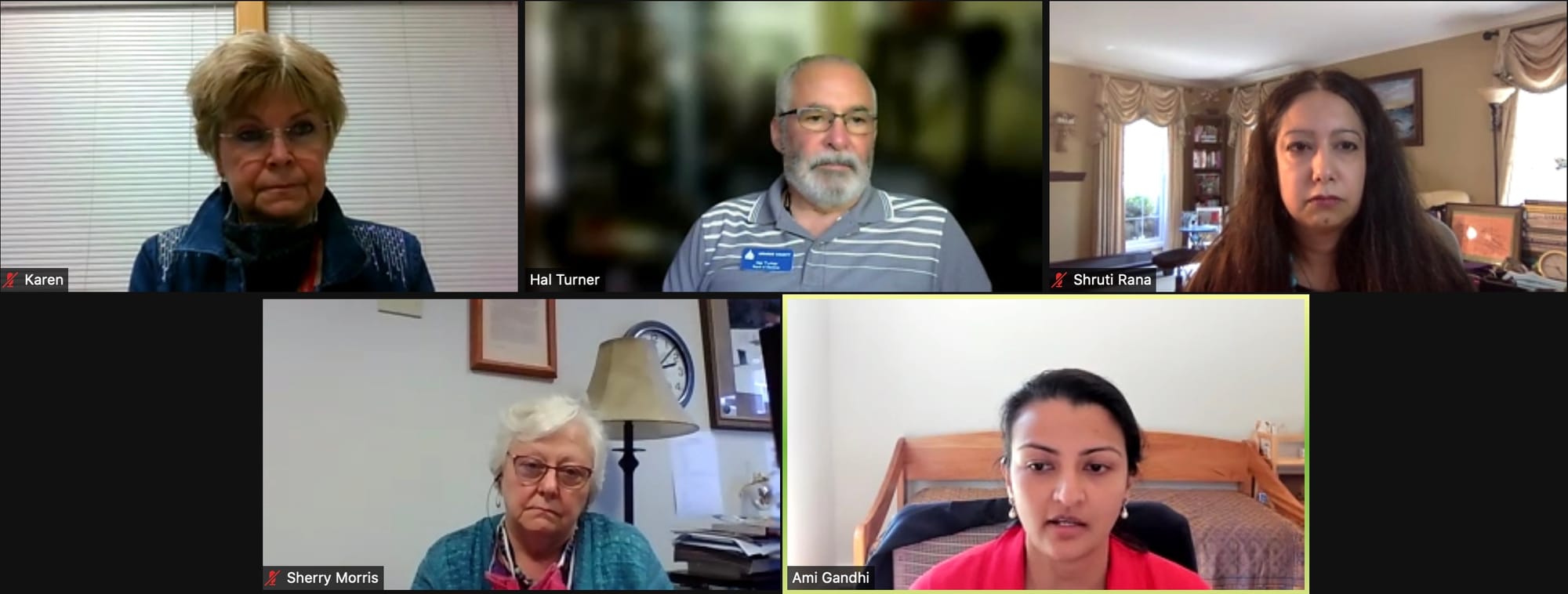Monroe County election board member on voting logistics: “We don’t want to be forced to make lemonade out of lemons.”



Monroe County commissioners want the election board to consider an approach to early voting that would use more than one location for voters to cast their ballots ahead of election day.
County commissioners would also like the election board to pursue the option of establishing “vote centers” for voting on election day. Such an approach would allow voters to cast a ballot at any county vote center, not at one assigned polling site.
Those two elements made up part of the message delivered on Thursday to the election board by president of the county commissioners, Julie Thomas.
All three commissioners attended Thursday’s meeting of the election board, to continue an ongoing debate over the space allocation for the election division.
The other key part of the message from Thomas on Thursday was a determination that the second floor of the Election Central building would remain allocated to the county’s community corrections department (probation), and not be assigned to the elections division.
Thomas was responding to a long-standing request from county clerk Nicole Browne that the elections division also be allocated the second floor of Election Central, which is the old Johnson Hardware building located at 7th and Madison streets. The request has been amplified in recent weeks and supported by the three-member election board, of which she is a member.
Thomas said, “We’re on board with you. We are with you on this. But we cannot, in a nutshell, lose the top floor of the Johnson Hardware building at this time.”
As other possible space for different election functions Thomas gave the old NAPA building at 3rd and Walnut streets. That building is part of some property acquired by the county as part of the convention center expansion project. Another possible space suggested by Thomas for some election functions is the county’s end of the Showers building on Morton Street.
Responding to Thomas was election board member Shruti Rana, who urged that the best solutions for Monroe County be identified by those who know Monroe County best. “We don’t want to be forced to make lemonade out of lemons,” Rana said.
Rana added, “We want to come up with the best options that we can, and then kind of work around those as opposed to saying: Well, here are the lemons, do what you can, and let’s hope for lemonade.”
Rana responded with concern to at least three aspects of the presentation from commissioners.
First, she cautioned against the framing of the space challenge in the way one of the slides from the commissioners presentation put it: “Voter Convenience vs. Voter Suppression.”
Rana, who’s a professor of international law at Indiana University, pointed to the potential danger in the wording of “convenience” and “inconvenience.” She cited the US Supreme Court decision in the Brnovich v. Democratic National Committee case, on which the court ruled in July this year.
The case involved Arizona laws prohibiting the counting of ballots cast in the wrong precinct, and the handling of ballots by anyone other than close family members or caregivers. A 6–3 majority in the case concluded that the laws did not violate Section 2 of the Voting Rights Act. From the majority opinion: “Mere inconvenience cannot be enough to demonstrate a violation…”
At the commissioners work session held on Wednesday, Rana had characterized the Brnovich decision as “allowing states to restrict voting, even if these restrictions had a racially discriminatory or disparate impact.”
A second issue to which Rana responded was the interest the commissioners expressed in tapping the perspective of the clerks from Knox and Vigo counties to help assess Monroe County’s election space needs. Thomas said at one point, “The Knox County clerk was kind enough to offer to assist us with looking at our available space and maximizing the space, looking at shelving and all of these things.”
Rana said, “I appreciate that you consulted other clerks about what’s going on and working well in their counties.” She added, “But I’m troubled—I hope there’s not a precedent being set. Our clerk represents our county and is intimately familiar with what goes on in our county. And what might work well somewhere else
may not work here.”
Knox County clerk David Shelton and Vigo County clerk Brad Newman had both weighed in during public commentary at recent commissioners meetings, in support of Monroe County clerk Nicole Browne’s space request for the whole Johnson Hardware building.
During public commentary at the end of Thursday’s election board meeting meeting, Natalia Galvan, chair of the Indiana 9th Congressional District Latino Caucus, weighed in on what she described as “the disrespect given to our clerk” by the county commissioners. Galvan continued, “Whether intentionally or not, this presentation highlighted the disregard of the expertise and elected position of Clerk Browne. We’ve elected Clerk Browne to make these decisions. She’s not an appointment. She’s elected.”
The third issue taken up by Rana was the question of vote centers. “I’m quite familiar with vote centers, and they have pros and cons,” Rana said. Rana continued, “We’ve talked about the pros, but they very much also have cons, particularly in red states, where they can be used as an excuse, for example, to limit voting locations under the guise of convenience.”
Getting a sharp response from Browne was a remark from county commissioner Penny Githens about the use of a U-Haul truck as a work space during the 2020 election season.
Githens said, “I have to say I was disturbed to hear that people worked out of the back of an unsecured truck around Election Day. I think if we are concerned about ballot integrity, that that really opens up a can of worms that we really don’t want to see happen.”
Browne responded, “I want to stop something before it even gets out there as a rumor, and be very, very clear: There was never a ballot in the back of a U-Haul truck. This is how rumors get started.”
Browne added, “Never, never never was there a ballot in the back of a U-Haul truck.”
Browne said her staff worked out of the back of the U-Haul truck to limit the number of people inside the building, because of the governor’s executive order, which was related to the COVID-19 pandemic. “I just want to clear that up right now—because that’s incendiary,” Browne said.
Vote Centers
One of the suggestions made by the county commissioners on Thursday was for the election board to consider establishing vote centers for Monroe County.
A vote center is a polling place where any eligible voter in the county can vote. They’re connected through the internet, so that when someone votes, the electronic poll books at all centers are updated, to prevent someone from voting more than once.
Generally, the vote center approach is supposed to cost less because fewer polling sites, thus fewer voting machines and fewer election workers, are needed. Convenience for voters is also a benefit that is touted for vote centers—because they can vote at any of several different locations on election day.
The flip side of that perspective is that an existing assigned precinct voting location could be much closer to someone’s current residence, and voting at any vote center could mean a longer travel time than for the current assigned location.
Indiana’s secretary of state’s website outlines seven steps for establishing vote centers: resolutions passed by county council and county commissioners; formation of a study committee; drafting a vote center plan; 30-day public comment period; election board approval; filing of plan with the state.
Of Indiana’s 92 counties, 48 of them have adopted a vote center approach.
The idea of vote centers is not new in Monroe County. In December 2011 the election board voted 2–1 in favor of them. But it requires a unanimous vote on the three-member board. The Republican on the board at the time voted against vote centers.
The current board includes: the county clerk, Nicole Browne; a Democrat, which is the slot that Shruti Rana fills; and a Republican, who is Hal Turner.
In early 2020, Browne told The B Square she would support vote centers in Monroe County. But she did not think there is the required unanimous support for vote centers on the election board .
At that time Hal Turner did not state opposition to vote centers in principle, but described several issues that he thinks need to be studied, like the question of whether vote centers would actually save money in Monroe County. The possible inconvenience to some voters also needs to be considered, he said. He also cited as crucial the accessibility issues of the vote center sites.
In early 2020, Randy Paul, a long-time advocate for the disability community, told The B Square that back in 2011 most of the proposed vote center sites at that time were not accessible. He’d chaired a group that delivered a report on it, he said. The lack of accessibility of sites in the vote center plan was a reason that Judy Smith Ille, the Republican member on the election board at the time, voted against vote centers, according to Paul.
At Thursday’s meeting of the election board, Turner responded to a report from the administrator for the commissioners, Angie Purdie, about the use of vote centers in some other counties. “Are all of those sites ADA compliant?” Turner asked.
Purdie indicated that she had not asked that specific question, but said that polling locations have to be ADA compliant. Turner responded by saying, “They have to be, but that doesn’t mean they are.”
During public commentary on Thursday at the election board’s meeting, Ami Gandhi, an attorney with the Chicago Lawyers Committee for Civil Rights, and Monroe County resident, weighed in on the question of vote centers. “I would caution that such a wholesale change to Monroe County elections should not be implemented without careful consideration of how it will affect all of Monroe County’s voters,” Gandhi said.
Gandhi continued, “While a vote center model may help reduce costs, such a drastic change should not be instituted without first conducting a race equity impact analysis on what might be the unintended consequences of this model.” She added, “There can be repercussions of changing and removing familiar polling places.”
To continue the conversation on election space needs, county clerk Nicole Browne has requested a slot on the Wednesday work session agenda of the county commissioners each week through the end of the year.
The work sessions take place after the regular Wednesday meetings of the commissioners, usually with a five- or ten-minute recess between the end of the regular meeting and the start of the work session. Agendas for regular meetings and the work session are posted on the web page for the commissioners.




Comments ()